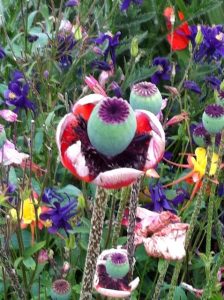 The Columbia City Yoga on-line Moving into Meditation class met this morning. We explored the role of wonder in our lives. In wonder we are open and deeply connected to the present. We step out of the busyness of our lives and become intimate with the natural world. We can appreciate how we are an expression of nature and be moved to change.
The Columbia City Yoga on-line Moving into Meditation class met this morning. We explored the role of wonder in our lives. In wonder we are open and deeply connected to the present. We step out of the busyness of our lives and become intimate with the natural world. We can appreciate how we are an expression of nature and be moved to change.
We continued to draw from Oren Jay Sofer’s book: Your Heart Was Made for This: Contemplative Practices for Meeting a World in Crisis with Courage, Integrity, and Love. In Oren invites us to appreciate and cultivate wonder in our lives. Wonder is often a doorway to realizing our inter-being with all of life.
We heard from poet turned marine biologist Rachel Carson’s book: The Sense of Wonder. Rachel urges us to help children keep their innate curiosity and wonder alive. “If a child is to keep alive his inborn sense of wonder,” writes Carson, “he needs the companionship of at least one adult who can share it, rediscovering with him the joy, excitement and mystery of the world we live in.”
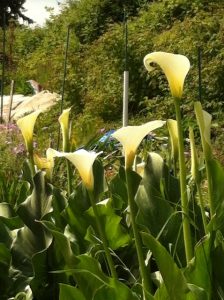 We heard from marine biologist Andreas Weber. In his book, The Biology of Wonder: Aliveness, Feeling and the Metamorphosis of Science, explores a new understanding of life as “poetic ecology.” He explains why deep wonder, romantic connection cost foster the feeling of being at home in nature
We heard from marine biologist Andreas Weber. In his book, The Biology of Wonder: Aliveness, Feeling and the Metamorphosis of Science, explores a new understanding of life as “poetic ecology.” He explains why deep wonder, romantic connection cost foster the feeling of being at home in nature
We heard Denise Levertov’s poem Sojourns in the Parallel World. This poem describes how our preoccupations draw us away from realizing our inter-relationship with the natural world. Letting ourselves “drift” into nature’s rhythms can offer us wondrous experience.
Guided Reflection
Welcome. Last week we explored the restorative experience of rest. Appreciating the body as a precious partner can restore the wonder of being alive to our hearts and minds. It can help us to sustain balance and enable us to be present with ourselves and others. Oren writes about the role of wonder in our lives:
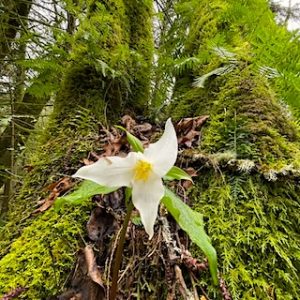 We need wonder to nourish the heart . . . Wonder uplifts us and guides us toward insight and connection. . . . Wonder is a state of openness and awe we experience by perceiving the world afresh. . . . amazement and deep connection to the present, . . . cleanses the dullness and familiarity of habit. . . . Look deeply enough into anything from a grain of sand to the vast night sky and you will be amazed. Look deeply enough into yourself, and you will discover that you are a walking miracle. This discovery is available to each of us . . . .
We need wonder to nourish the heart . . . Wonder uplifts us and guides us toward insight and connection. . . . Wonder is a state of openness and awe we experience by perceiving the world afresh. . . . amazement and deep connection to the present, . . . cleanses the dullness and familiarity of habit. . . . Look deeply enough into anything from a grain of sand to the vast night sky and you will be amazed. Look deeply enough into yourself, and you will discover that you are a walking miracle. This discovery is available to each of us . . . .
Wonder . . . invites us to reclaim our bodies’ deep knowing . . . We sense how the vitality flowing through us – the energy that animates our body, heart and mind – connects to all life. We remember in our bones that we are not separate from this world but are nature made conscious and self-aware.
Oren begins his chapter on wonder with a quote from poet turned marine biologist, Rachel Carson: “Those who contemplate the beauty of the earth find reserves of strength that will endure as long as life lasts.” In her book, The Sense of Wonder, Rachel observed,
A child’s world is fresh and new and beautiful, full of wonder and excitement. . . . If I had influence with the good fairy who is supposed to preside over the christening of all children I should ask that her gift to each child in the world be a sense of wonder so indestructible that it would last throughout life . . . .
Oren describes how:
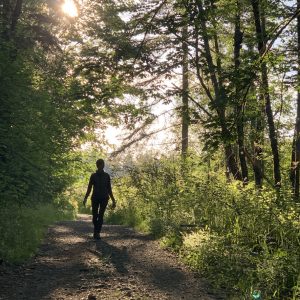 We can cultivate wonder. To water seeds of wonder . . . share something they wonder about – a question or curiosity. Begin with “I wonder” sentences:
We can cultivate wonder. To water seeds of wonder . . . share something they wonder about – a question or curiosity. Begin with “I wonder” sentences:
I wonder why butterflies fly? . . . I wonder how the heart gets feelings? . . .
Consider the most beautiful question. A beautiful question can pique our curiosity, invite us into deeper intimacy and reconnect us with the wonder and mystery of life.
I invite you to reflect for a moment on the experiences and sources of wonder that have enriched your life. What beautiful questions surface for you?
In preparing for class today, I discovered the amazing work of the marine biologist Andreas Weber. In his book, The Biology of Wonder: Aliveness, Feeling and the Metamorphosis of Science, explores a new understanding of life. His work centers on the view of life he called poetic ecology: “all life builds on relations and unfolds through mutual transformations.”
Poetic ecology . . . explains why the deep wonder, the romantic connection and the feeling of being at home in nature . . . help us to develop a new view of life as a creative reality . . . Poetic ecology allows us to find our place in the grand whole again.
Nature… is the living medium of our emotions and our mental concepts. . . .
All our qualities — and particularly the most human ones like our need to be in connection, to be perceived as an individual, to be welcomed by other life and give life, in short, our need to love — spring forth from an organic “soil.” We are part of a web of meaningful inter-penetrations of being that are corporeal and psychologically real at the same time. . . .
In her poem, Sojourns in the Parallel World, Denise Levertov writes:
 We live our lives of human passions,
We live our lives of human passions,
cruelties, dreams, concepts,
crimes and the exercise of virtue
in and beside a world devoid
of our preoccupations, free
from apprehension—though affected,
certainly, by our actions. A world
parallel to our own though overlapping.
We call it “Nature”; only reluctantly
admitting ourselves to be “Nature” too.
Whenever we lose track of our own obsessions,
our self-concerns, because we drift for a minute,
an hour even, of pure (almost pure)
response to that insouciant life:
cloud, bird, fox, the flow of light, the dancing
pilgrimage of water, vast stillness
of spellbound ephemerae on a lit windowpane,
animal voices, mineral hum, wind
conversing with rain, ocean with rock, stuttering
of fire to coal—then something tethered
in us, hobbled like a donkey on its patch
of gnawed grass and thistles, breaks free.
No one discovers
just where we’ve been, when we’re caught up again
into our own sphere (where we must
return, indeed, to evolve our destinies)
—but we have changed, a little.
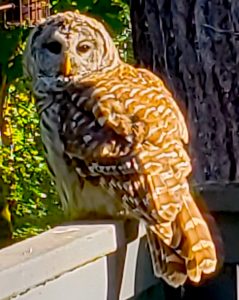 When “we drift for a minute . . . of . . . pure insouciant life . . . something tethered in us . . . breaks free . . . no one discovers where we’ve been . . . but we have changed, a little.”
When “we drift for a minute . . . of . . . pure insouciant life . . . something tethered in us . . . breaks free . . . no one discovers where we’ve been . . . but we have changed, a little.”
In our practice we can allow ourselves to be changed. We sense it in our bodies. We are aware of it in the world around us. In practice we learn how to bring awareness to moment by moment experience. I invite you to drift into pure insouciant life. Tune awareness toward feeling. Feel being right now. Notice what surfaces: feeling breathing? physical sensation? emotional energy? thoughts? Is it possible to gradually unharness from any preoccupation other than this moment?
I invite you to feel breathing: this in-breath and this out-breath. You might begin to experience intimacy with the breath. What is it like to sense taking in the world and giving out to the world? What is like to sustain and to be sustained by so much life around you?
You might slow down long enough to feel the pulse of life. You might listen long enough to hear the voice that speaks from the heart. The mind becoming aware of what is true, perhaps aware of what is needed. This “presencing” is about carefully feeling our way moment by moment.
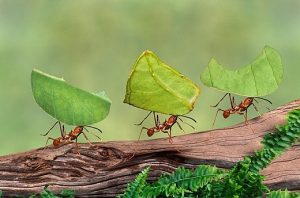 Focus your attention on any of your senses with a fresh and open attitude. Imagine you had never heard sounds before, never felt a sensation . . . Receive the sensory impressions as they come and go. Open to the vividness of having a body with senses to perceive the world and organs to draw nourishment from the earth. Touch the wonder of being alive.
Focus your attention on any of your senses with a fresh and open attitude. Imagine you had never heard sounds before, never felt a sensation . . . Receive the sensory impressions as they come and go. Open to the vividness of having a body with senses to perceive the world and organs to draw nourishment from the earth. Touch the wonder of being alive.
As we attend to life in our body we experience our belonging to this natural world. Our ever changing, moving energies, our bodies are an expression of the great dance. Here feeling our creatureliness we can feel the emotions and sense the impressions that are the fertile soil in which the seeds of wonder can grow.
Are we not a part of cloud, bird, fox, the flow of light, the dancing
pilgrimage of water? How do animal voices, mineral hum, wind
conversing with rain, ocean with rock, stuttering of fire to coal animate our lives? How do our wondrous connections change us?
